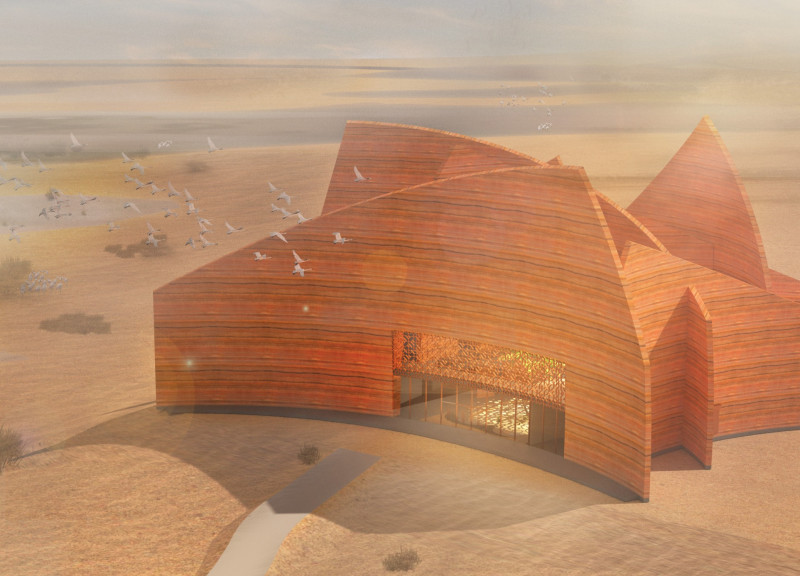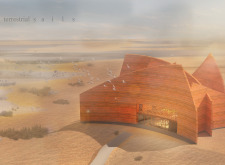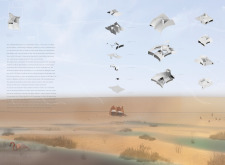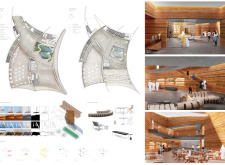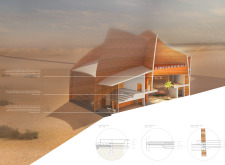5 key facts about this project
The Al Wathba Wetland Reserve in Abu Dhabi provides a backdrop for a thoughtful design that prioritizes sustainability and education. The center serves as a gathering place for visitors, promoting a deeper understanding of the unique environment and its diverse wildlife, especially the notable flamingos that inhabit the area. The overall concept integrates natural elements and essential functions that enhance the visitor experience in a meaningful way.
Spatial Organization
The ground level consists of key public spaces, including a reception area, offices for visitor services, a gift shop, a café, and an exhibition area focused on the flamingo habitat. This arrangement is designed to encourage easy movement and interaction, allowing visitors to engage with various exhibits and amenities. The second level includes additional exhibition spaces and a raised auditorium that offers views of the wetlands, making it suitable for educational presentations while immersing visitors in the surrounding landscape.
Materiality
Rammed earth is used as the primary material for construction, providing both visual appeal and practicality. The textural quality of the rammed earth walls connects with the local environment and helps maintain a comfortable indoor temperature. This choice demonstrates a commitment to sustainable practices, as the material is locally sourced. The earthy tones and textures create a welcoming atmosphere that aligns well with the natural setting.
Architectural Form
The design features dynamic shapes characterized by curves and clean lines that encourage upward gaze and interaction with the sky. Light and shadows play a significant role in shaping the experiential qualities of the space. Mashrabiyas are incorporated into the design, facilitating natural airflow while incorporating traditional patterns. They not only enhance comfort inside but also provide cultural depth to the overall appearance of the structure.
Experiential Quality
Flexibility is a vital component of the design, with learning areas designed for various uses, including workshops and community events. This adaptability showcases the center's role as a space for engagement and education. The careful placement of windows and open areas invites interaction with the landscape, allowing visitors to take in the sights and sounds of the wetlands while participating in educational experiences.
The integration of these elements becomes evident as spaces are connected to the wetlands beyond. This connection offers visitors opportunities for observation and reflection on the rich biodiversity that defines the reserve, inviting them to appreciate the delicate balance of nature.


